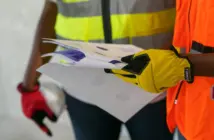Farmers preparing for calving should also be thinking about effective ways to keep workers safe and well, says WorkSafe’s Agriculture Sector Lead Al McCone.

“Calving is a challenging time in terms of health and safety and there’s a lot to think about from setting up calving sheds and putting together calving kits, to managing hygiene and planning staff rosters.
“On the safety side, slips, trips, falls and kick injuries are high safety risk factors during calving.
“Cattle should only be handled by suitably experienced people who know the hazards and how to avoid them.
“Planning by identifying the risks and working out how to manage them will ensure the farm keeps operating efficiently.
“Have a team meeting before calving starts and develop a plan together to handle the risks and to ensure people also eat well, keep hydrated and have sufficient breaks,” McCone advises.
Fatigue risk
He says fatigue is a risk in busy periods.
“Workers need to ensure they get good rest and maintain a work/life balance.
“While fatigue can cause or worsen physical and mental health problems, it can also affect work performance and lead to accidents.”
To reduce on-farm fatigue, review work rosters and hours, and encourage workers to get adequate rest and exercise, and maintain a healthy diet to sustain them when busy.
Hygiene must be a major focus too, McCone adds.
“A bucket of water, soap and towel in the shed doesn’t cut it.
“Workers need a clean place to wash hands and faces.
“That should include running water, liquid soap and a hygienic way to dry their hands, such as paper towels.”
Deadly diseases
Diseases that can be transmitted from animals to humans include campylobacter, cryptosporidiosis, E. coli, leptospirosis, listeriosis, milker’s nodules, ringworm, salmonella and streptococcus.
Farm workers can become ill through small cuts or abrasions, by getting animal blood, urine or faeces splashed in eyes, nose or mouth, or through cross contamination via hands.
“Workers should all have appropriate personal protective equipment (PPE),” McCone insists.
“Hands should be covered so suitable disposable gloves should be provided.
“Waterless alcohol-based hand rubs can sanitise visibly clean hands.”
Workers should take off their stock-handling PPE on leaving the cattle shed, and wash before eating drinking or smoking.
“Everyone being involved in the planning process is essential,” McCone stresses.
“Make sure everyone knows their role, what the risks are and the best ways to mitigate them.
“By working with your team to establish and communicate a safety and wellness plan, you’ll limit the risk of staff sickness or injury at such a key time,” McCone says.



